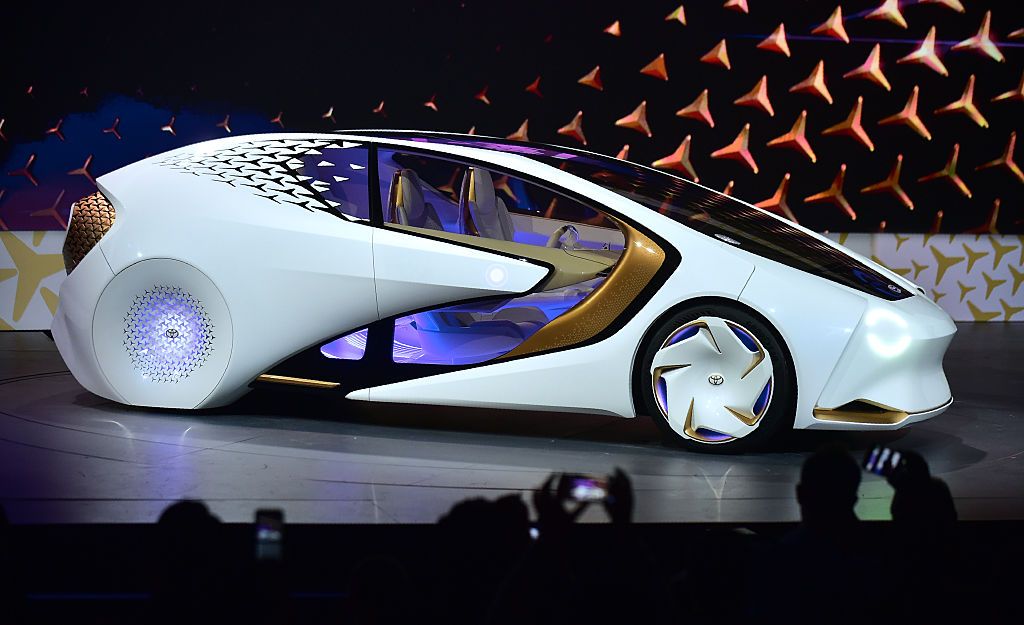Ultra-luxury cars aside, the automobile industry lives in a cost-control environment. Pennies, Euro-cents and single-digit Yen are pinched on virtually all the parts that comprise a car. A relatively drastic cost-control tactic that is used occasionally is to have body stampings perform dual duties. Most often, this takes the form of symmetrical doors where, say, the right front and left rear doors are the same (save, perhaps, for a cut-out for the rear wheel opening).
Today's post deals with the interesting case of a concept car intended to demonstrate even more extensive panel-sharing. It is the 1966 American Motors Cavalier (Wikipedia entry here). Besides the below-the-beltline parts of the doors, the front and rear side / fender panels could be used on both sides of the car. Also the bumpers, front and rear. The link above claims that hood and trunk panels could be interchanged, but that isn't evident to me from the photos.
The resulting design is fairly clean and attractive, though diminished by having a static feeling that was probably inevitable, given the quest for symmetry.
The front is simple and attractive, though not particularly distinctive.
The doors are hinged at the A and C pillars. The slopes of the A-pillar and the leading edge of the C-pillar differ in order to help relieve potential static effects (window framing apparently had separate stampings from the remainder of the doors). Note the identical cut-outs for the tail light and grille wrap at the fenders' extremities.
Compare the wheel cut-outs in this photo to what can be seen in the previous photo. They seem to "lean" in opposite directions. Is this an optical illusion? A side view of the Cavalier would resolve this, but I could not find such a photo.
As for the hood and trunk lid, it's possible that the horizontal parts would use the same stamping, but as I mentioned, I can't be sure, and tend to think they differ from what I see in the various photos.
Ultra-luxury cars aside, the automobile industry lives in a cost-control environment. Pennies, Euro-cents and single-digit Yen are pinched on virtually all the parts that comprise a car. A relatively drastic cost-control tactic that is used occasionally is to have body stampings perform dual duties. Most often, this takes the form of symmetrical doors where, say, the right front and left rear doors are the same (save, perhaps, for a cut-out for the rear wheel opening).
Today's post deals with the interesting case of a concept car intended to demonstrate even more extensive panel-sharing. It is the 1966 American Motors Cavalier (Wikipedia entry here). Besides the below-the-beltline parts of the doors, the front and rear side / fender panels could be used on both sides of the car. Also the bumpers, front and rear. The link above claims that hood and trunk panels could be interchanged, but that isn't evident to me from the photos.
The resulting design is fairly clean and attractive, though diminished by having a static feeling that was probably inevitable, given the quest for symmetry.
The front is simple and attractive, though not particularly distinctive.
The doors are hinged at the A and C pillars. The slopes of the A-pillar and the leading edge of the C-pillar differ in order to help relieve potential static effects (window framing apparently had separate stampings from the remainder of the doors). Note the identical cut-outs for the tail light and grille wrap at the fenders' extremities.
Compare the wheel cut-outs in this photo to what can be seen in the previous photo. They seem to "lean" in opposite directions. Is this an optical illusion? A side view of the Cavalier would resolve this, but I could not find such a photo.
As for the hood and trunk lid, it's possible that the horizontal parts would use the same stamping, but as I mentioned, I can't be sure, and tend to think they differ from what I see in the various photos.
















EmoticonEmoticon